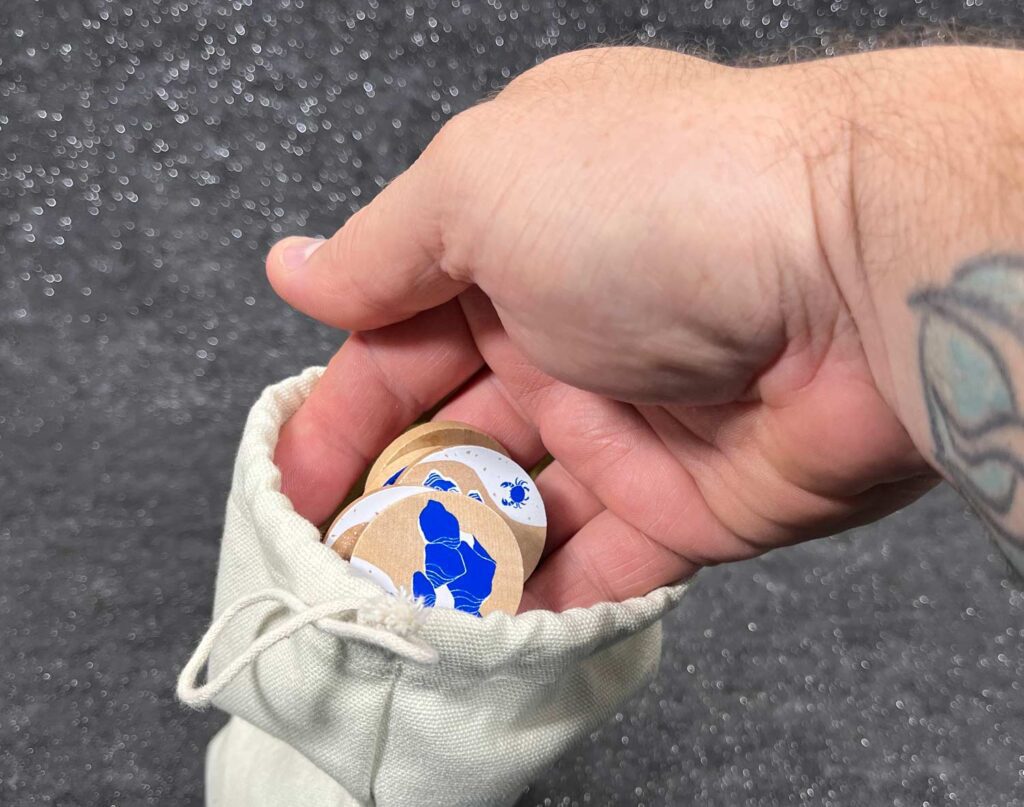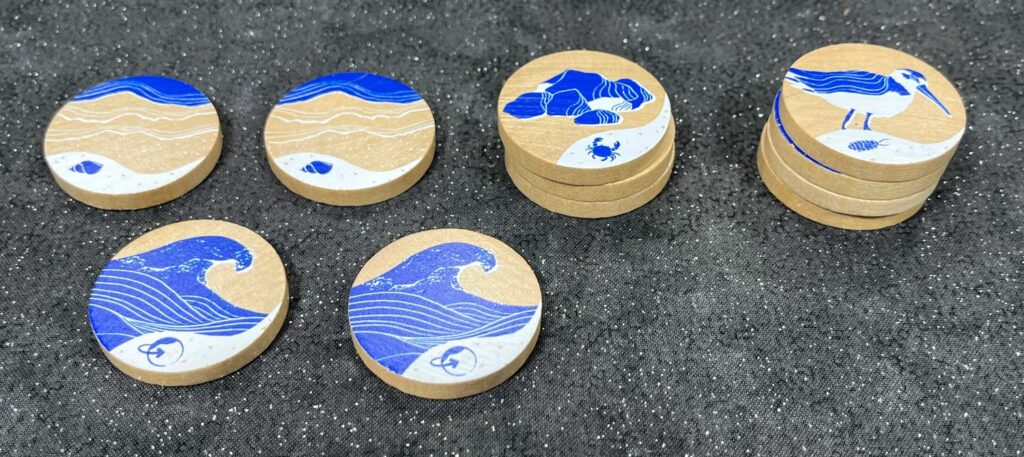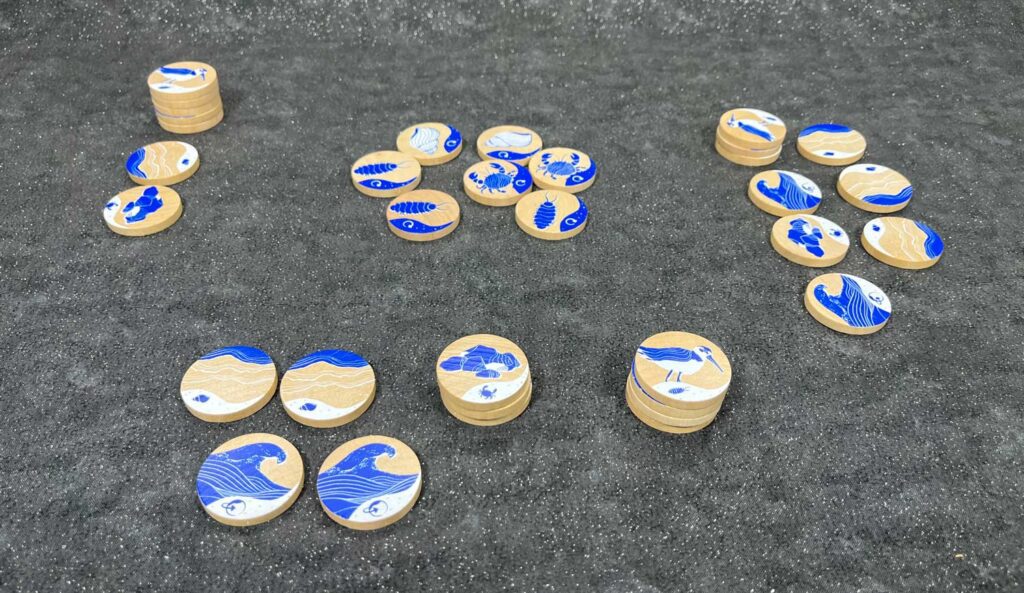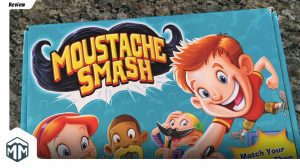Disclosure: Meeple Mountain received a free copy of this product in exchange for an honest, unbiased review. This review is not intended to be an endorsement.
This is going to be a short review, as befits a short game. But please don’t take that to mean that Seaside isn’t good. It is, in fact, good, but it’s short and sweet and you can play it on a picnic table, a beach towel, or even standing up at a bar table.
The story goes that when Bryan Burgoyne was designing Seaside, he specifically wanted a game he could play at the beach. That meant a game that was portable, durable, and most importantly waterproof. Thus was born Seaside, a game in a small canvas bag, with thick double-sided painted wooden discs.

How to Play Seaside
Gameplay is uber simple, in fact the only setup required is taking the instructions out of the bag—you don’t even need to read them if you already know how to play, you’re just getting them out of the way.
As play progresses, each player will reach into the bag and pull out a single disc, determine which of the two sides they want to “play”, then do what the disc indicates (either putting the disc into the middle of the play area, or in front of themselves—more on that in a moment). Sometimes the player might be allowed to pull a second, or third disc out in a row, but eventually the bag will pass to the next player who will perform the same series of actions.

Once the bag is empty, players will stack all the discs they have in front of them, and determine who has the highest stack, with that player being the winner. Seaside is one of those games you can literally teach on the fly.
What do all the discs mean?
Of course there’s a bit more to the game than that, but it’s always nice when the mechanics of play are simple. But in order to collect discs, you have to know what each of them does.
In general there are two types of disc faces: a white bottom (which allow the player to keep that disc in front of them), and a blue bottom (which require the player to place the disc “into the sea”, also known as the middle of the play area). Discs with a blue bottom will also have a “play again” symbol, which indicates that you can pull another tile from the bag—you are throwing it into the ocean after all.
Discs with a white bottom come in one of 4 varieties: Sandpipers, Crab habitats, Beach, and Waves.
Sandpipers allow you to collect all of the “isopod” discs from the center of the table and stack them. But for the remainder of the game you can only collect Sandpiper stacks of the same height.
Once you have two Crab habitats, you can collect all the crab discs from the center of the table, plus 1 from each of your opponents which has a crab.
Beach discs allow you to collect seashells from the center of the table, one for each Beach you have in front of you.
Finally, the player with the most Wave discs at the end of the game gets to collect all of the remaining discs from the ocean, a powerful end game possibility.

Final Thoughts on Seaside
Seaside is a perfect way to start or end a game night, or to teach someone who isn’t that into board games, or to play with younger family members, or if you just want something that isn’t going to tax your brain.
There’s something magical about reaching into the bag, not knowing what you’re going to get. Maybe there are 4 crabs in the middle of the table, you’ve already got 1 Crab habitat, and you’re hoping to get a second one. Or maybe there’s lots of isopods and you’re just hoping for a sandpiper. Or maybe it’s almost the end of the game and Shelley has more Wave discs than you do, and you’re hoping to even the odds. Because you never know what you’re going to get, you might wind up helping Miranda by pulling the very tile she needs. Or maybe you do get exactly what you want, but then the next player gets what they want too.
So if you’re looking for a casual game to while away the time, pick up Seaside and give it a shot. You can even pretend you’re at the beach.













Add Comment